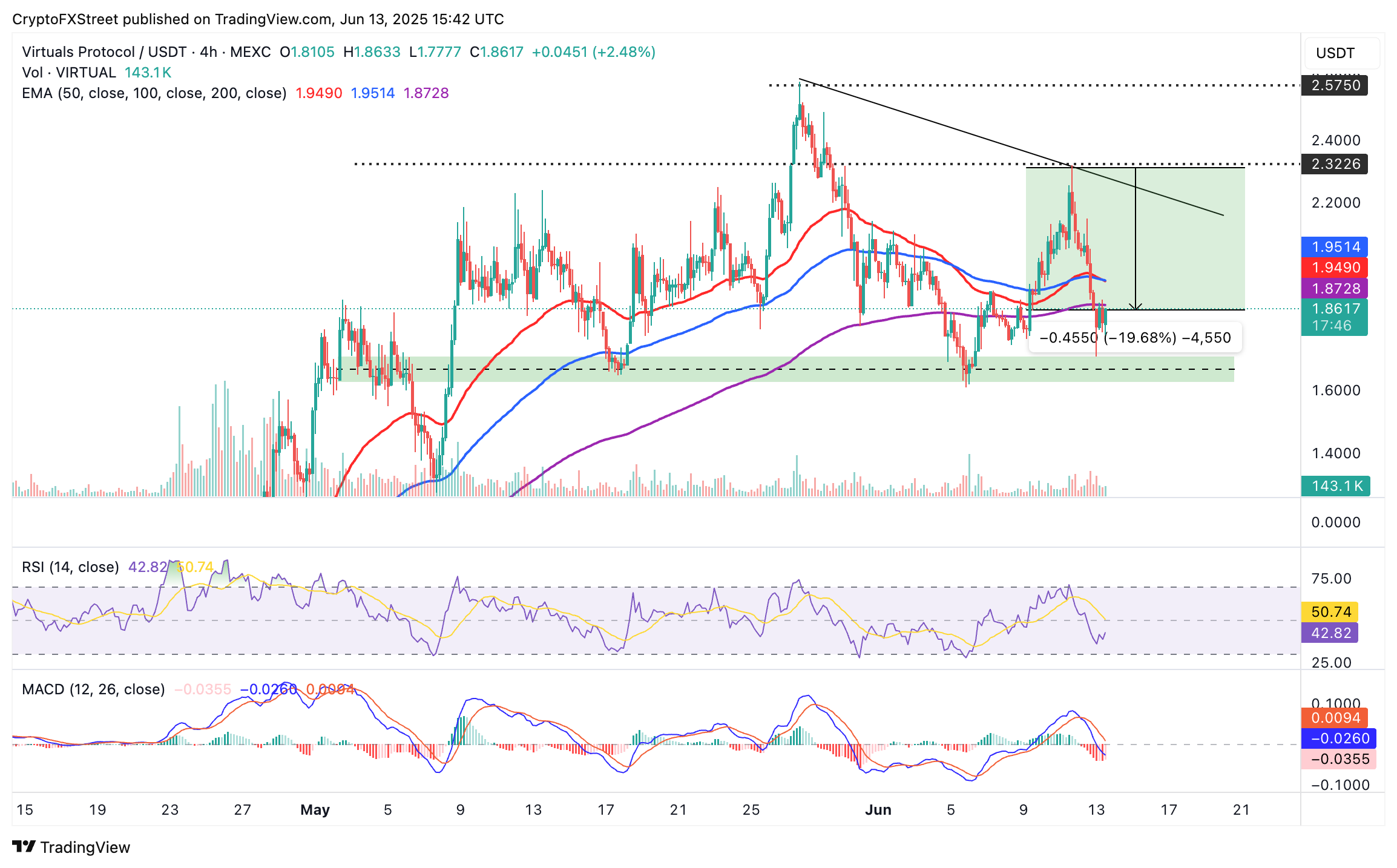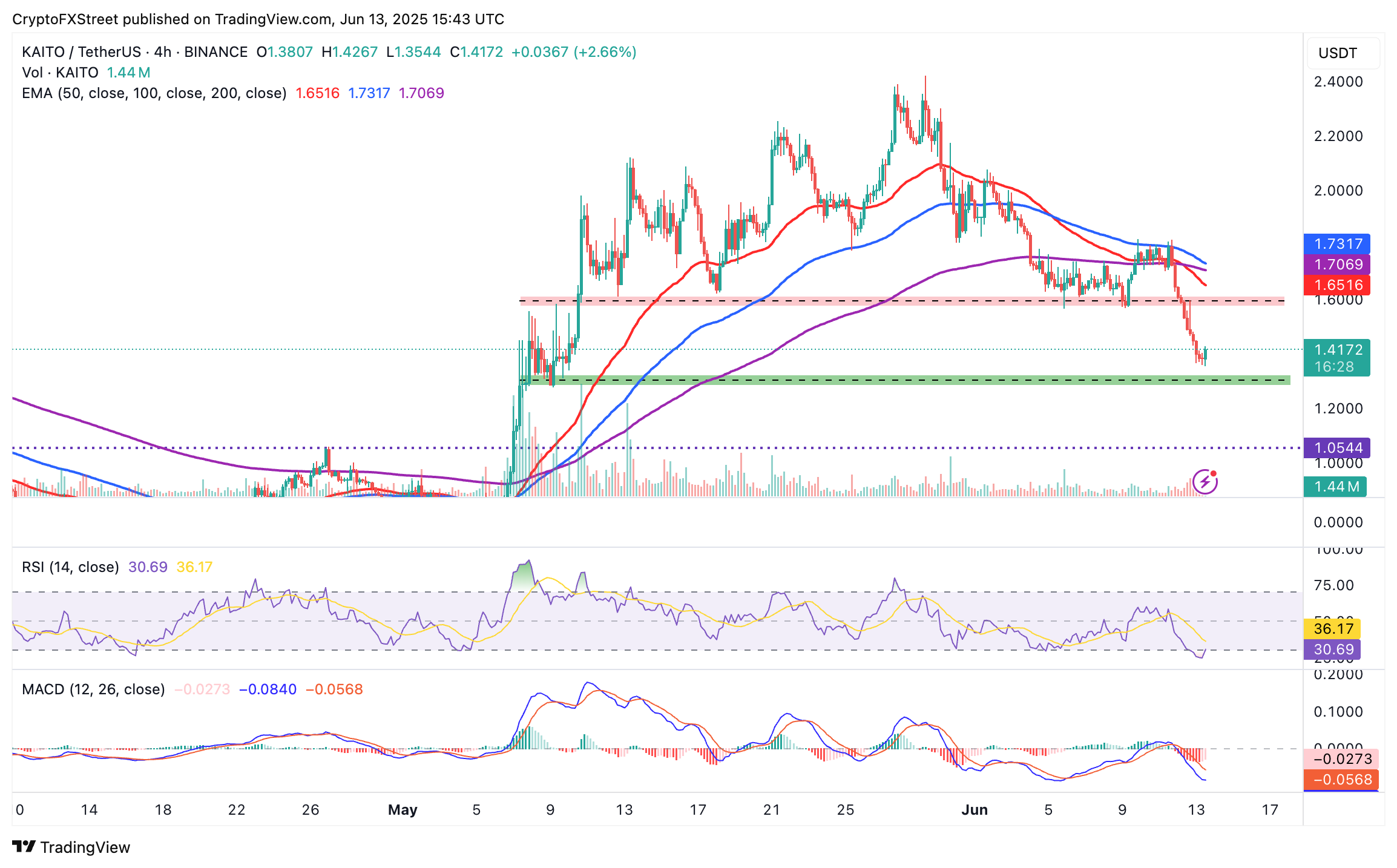- Bittensor plummets, extending losses to levels seen in early June, as the artificial intelligence market capitalization drops to $26.5 billion.
- Virtuals Protocol holds steady above key support at $1.60, following a 20% decline from its most recent peak.
- Kaito approaches a critical support area alongside overload RSI ahead of a potential rebound.
Turmoil and distress hit the cryptocurrency market early on Friday, with liquidations exceeding $1 billion amid escalating geopolitical tensions in the Middle East. Artificial Intelligence (AI) tokens, including Bittensor (TAO), Virtuals Protocol (VIRTUAL) and Kaito (KAITO), caved to the volatility, posting losses ahead of the weekend.
Recovery in the broader crypto market remains subdued, with Bitcoin (BTC) hovering below $105,000 during the American session. Investors are likely digesting the impact of the conflict between Israel and Iran, which has the potential to escalate.
The AI sector’s market capitalization dropped to $26.5 billion, according to CoinGecko. Leading altcoins such as Bittensor, Internet Computer (ICP) and Near Protocol (NEAR) are in the red, sustaining significant losses over the past 24 hours.
Bittensor offers signs of recovery
Bittensor, the open-source protocol utilizing blockchain technology to advance a decentralized network for machine learning AI models, is trading at $366 at the time of writing.
The token is currently trading below the 4-hour 50-period Exponential Moving Average (EMA), which is at $396, the 100-period EMA at $399, and the 200-period EMA at $401, indicating a technical bearish bias.
The Moving Average Convergence Divergence (MACD) indicator has sustained a sell signal on the 4-hour chart, which was validated on Wednesday when the blue MACD line crossed below the red signal line. If the sell signal persists, traders could reduce exposure to TAO, contributing to the overhead pressure and increasing the possibility of the decline extending below the $350 short-term support to $340.

TAO/USDT 4-hour chart
On the other hand, the Relative Strength Index (RSI) approaches the oversold area in the 4-hour time frame, signaling a potential recovery during the weekend session. Traders will monitor the RSI’s potential reversal toward the 50 midline to validate the likelihood of a recovery aimed at $400.
Virtuals Protocol paring losses
Virtuals Protocol, the AI agent network, is reversing the trend, trading at around $1.85 at the time of writing. With the RSI reversing above 40 and moving toward the 50 midline, the path of least resistance is slowly shifting north, increasing the probability of a major recovery in the upcoming weekend session.
Traders will monitor the price action for a break above the 200-period EMA resistance at $1.87, which could pave the way for gains beyond the confluence hurdle at around $1.95. The 50-period EMA and the 100-period EMA converge here to reinforce the resistance.

VIRTUAL/USDT 4-hour chart
Despite the potential recovery, market participants should temper bullish expectations, considering the sell signal sustained by the MACD indicator since Thursday. The red histogram bars extending below the center line (0.00) reinforce the bearish grip on the AI token.
Kaito bulls defend key support
Kaito’s price shows subtle signs of recovery despite a 2% decline on the day and a 22% drop from the lower high of $1.81, reached on Wednesday. The token exhibits an oversold RSI, with the potential to influence a short-term recovery as volatility in the broader crypto market cools.

KAITO/USDT daily chart
The RSI offers signs of reversing into neutrality and extending the recovery toward the 50 midline as the price lifts above the $1.40 level. Several potential 4-hour closes above this key would encourage traders to buy the dip, thus increasing the intensity of the tailwind and the likelihood of a sharp move to the next key resistance at $1.60.
Cryptocurrency prices FAQs
























